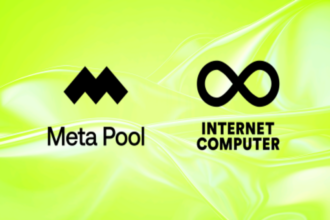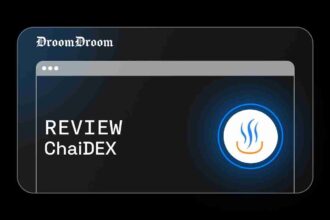The blockchain has been in existence since 2008 and has played a crucial role in enabling decentralization in cryptocurrencies. As the number of blockchain networks continues to rise every day, the need to use a blockchain bridge is essential, as it makes it easier for people using different networks to conduct transactions in a quick, secure, and effective way.
- Types of Blockchain Bridges
- Cross-chain blockchain bridges
- Multichain blockchain bridges
- Trusted bridges (centralized bridges)
- Untrusted bridges (decentralized bridges)
- Side chain bridges
- Advantages Of Blockchain Bridges
- Tokenization of assets
- Cross-border transactions
- Decentralized Exchanges(DEX)
- Supply chain management
- A wide range of opportunities
- Disadvantages of Blockchain Bridges
- Why Are Blockchain Bridges Susceptible to Attacks?
- How do Blockchain bridge hacks happen?
- Conclusion
A blockchain bridge is like a physical bridge that connects two different blockchain networks or applications to make the transfer of assets more efficient without the asset losing its value. This may take place when one is sending an Ethereum-backed asset to an asset that is backed by the US dollar, or from apps like Binance to Metamask and vice versa.
Types of Blockchain Bridges
Several types of blockchain bridges offer different services among the blockchain networks
Cross-chain blockchain bridges
This type of bridge enables users to connect with different blockchains, transfer assets, and communicate. Cross-chain bridges allow users to enjoy the different components of the network and their advantages.
Multichain blockchain bridges
Multichain blockchain bridges enable users to connect with different blockchain networks and enjoy the features of each network; this increases the interoperability and flexibility among various blockchain networks. To learn more about interoperability,
Multichain offers different user services that make interoperability easier. Apart from acting as a bridge between different blockchain networks, it has a router that plays a vital role in the transfer of assets between different blockchains. The router leverages the liquidity of assets, minting of assets, and ensuring that the cost of transferring assets is cheaper. This applies to Ethereum-originated assets.
Trusted bridges (centralized bridges)
Trusted bridges, also known as centralized bridges, usually have a mediator that does the transaction on behalf of the owner. Though it is user-friendly, it has issues with the control measures as it is centralized.
Untrusted bridges (decentralized bridges)
Untrusted bridges do not have a mediator who controls the transactions being made by the investors. The bridges are controlled by algorithms that control the transactions of assets and funds, as they are not controlled or governed by anybody or organization. With the help of smart contracts, investors can keep track of their funds and assets that are in the market.
Side chain bridges
Side chain bridges connect the main blockchain network with its side networks and can communicate and make transactions without affecting the main network. This means that if there is a breach, the main network won’t be affected.
Advantages Of Blockchain Bridges
Tokenization of assets
Since tokenization requires assets to be represented in blockchains, the presence of many blockchains may be challenging. Blockchain bridges help in such circumstances by increasing accessibility, liquidity, and easy transfer among the blockchain networks. These amazing features have helped increase investment opportunities and trade with investors.
To understand tokenization, in a more user-friendly way read this article
Cross-border transactions
Unlike the traditional way of transacting funds across borders, which requires a lot of time and transactional fees for sending and withdrawing, the challenges have been tackled by the use of blockchain. With blockchain bridges, it is easier to transact since different blockchain networks can be connected and transactions can be made quickly.
Decentralized Exchanges(DEX)
Though different cryptocurrencies use different blockchain networks, one can exchange the cryptocurrency without any need for an intermediary. The exchange is made through blockchain bridges that connect different blockchain networks and enable the exchange to take place quickly. However, the differentiated nature of different blockchains brings about a difference in liquidity in DEX.
Supply chain management
The use of blockchain bridges improves the transparency, efficiency, and tracking of currency being traded. This has been useful to the stakeholders responsible, as they can monitor the progress of the trade and receive full profits. However, the differences in different blockchains may hinder the stakeholders from benefiting from the amazing features of the blockchain bridges. However, there are solutions to some challenges faced in supply chain management.
A wide range of opportunities
With the benefits brought by blockchain bridges, investors can have access to different cryptocurrencies on different blockchains, send funds and assets, and have their business done without meeting physically. This has led to an increase in trading on global markets.
Disadvantages of Blockchain Bridges
Complicatedness
Blockchain bridges are usually complicated during the creation and implementation of new users. This discourages investors from investing through blockchain losses, as they may either lose their assets during transactions if they are not made properly or have their accounts hacked.
Transactional Fees
Since blockchain bridges are services offered to users, the services may be required to be paid to the people behind the development of the bridges that enable transactions to be made effectively. The charges being paid may discourage investors who might think that transactions made are not charged and that they are being scammed since using cryptocurrencies may not require extra transaction costs.
Centralized theft
In a centralized blockchain bridge, the intermediary, who transacts on behalf of the investors, may decide to steal from the investors, give false information as a reason why the transaction was not successful, and keep the funds or assets for self-benefit. This hinders investors who are willing to invest and make profits for both parties involved, including the intermediary body conducting the transactions.
Safety Hazards
Though the producers and programmers of blockchain bridges intend to create a safe platform where investors are free to trade, some people intend to take advantage of the blockchain bridges to steal and cause a nuisance to the network.
Why Are Blockchain Bridges Susceptible to Attacks?
Some bridges, like centralized bridges, require one to hand over their details to a third party. In case the third party loses the data and ends up in the hands of a scammer, it may be used to either steal from you or create other accounts using your data and use it to scam others.
Bridge developers have not yet found a better means of having different blockchain networks connected. Hackers who may have blockchain-developing skills may link up with other networks and steal.
If you are a blockchain developer or aspire to be one,these are the skills that you must have.
On decentralized bridges where one is not required to share their data on KYC, hackers may take advantage and do malicious things, and even if they are tracked down, it will not be easy for the regulatory bodies to prove that they have done the hacking.
How do Blockchain bridge hacks happen?
There are two main types of blockchain bridge hacks, and there are several ways in which one may prevent being attacked and losing assets and funds.
Code attacks
These are attacks that take advantage of the security loopholes and exploit the smart contracts by either connecting to other blockchain networks or by creating false funds and using them to transact on the markets.
Design attacks
These are attacks that attack the designs being made for blockchain bridges; they are usually made possible by social engineering.
These attacks are not faced by blockchain bridges alone but are continuing threats that exist in the cryptocurrency markets. Therefore, it makes one aware of the type of hack and how to prevent it from being hacked.
Conclusion
Though blockchain bridges offer a lot of better services, they are still prone to hacks, and these hacks lead to massive losses. You are advised to do a check-up before choosing the bridge to use. You should check if it has ever been hacked before and how it’s user-operable. As blockchain bridges continue to be updated and modified, you are also encouraged to be updated, as well as to know the new features introduced and how to use them.



















